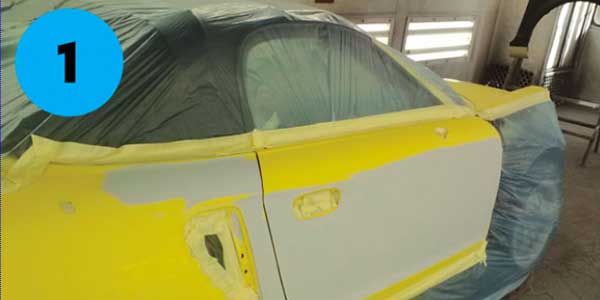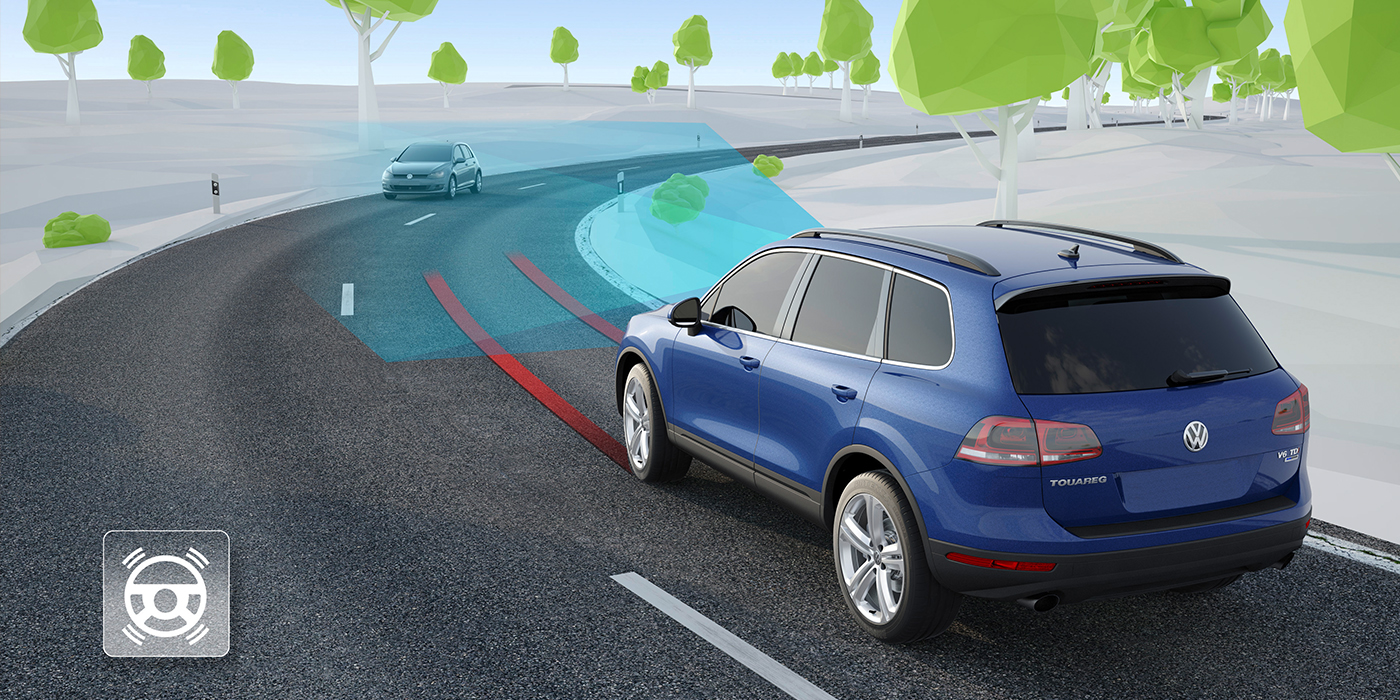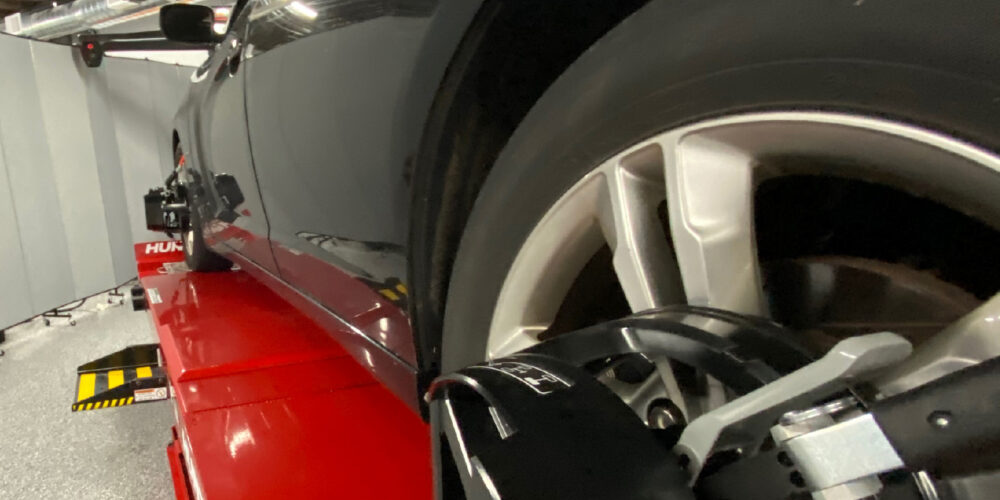Many have eliminated the need for a wet-on-wet sealer by finishing off the 2K primer with a finer grit sandpaper, but sometimes it’s still prudent to seal a repair prior to refinishing. You don’t want to experience the dreaded “sealer creep” in a door jamb, where the sealer’s edge is exposed rather than covered with paint. But why doesn’t the color cover the sealer? Simple physics reveals the answer: inertia. A body in motion wants to remain in motion, and since the sealer is heavier than the color, its motion is greater and it penetrates further than the color. So what can a painter do about it besides spot refinishing the jamb later? Avoid it altogether with a preliminary masking “dam.” Here’s how:
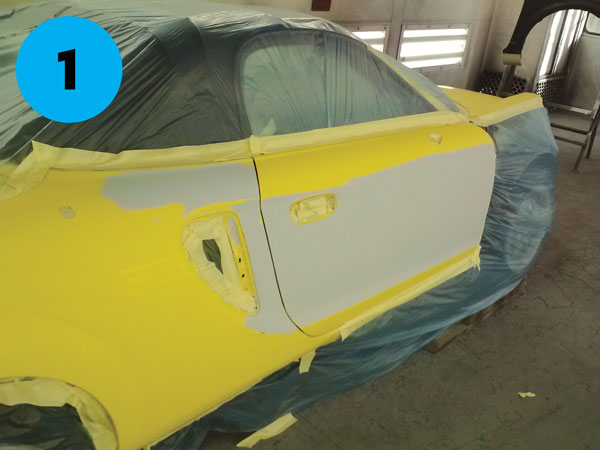 A candidate for a preliminary masking dam.
A candidate for a preliminary masking dam.
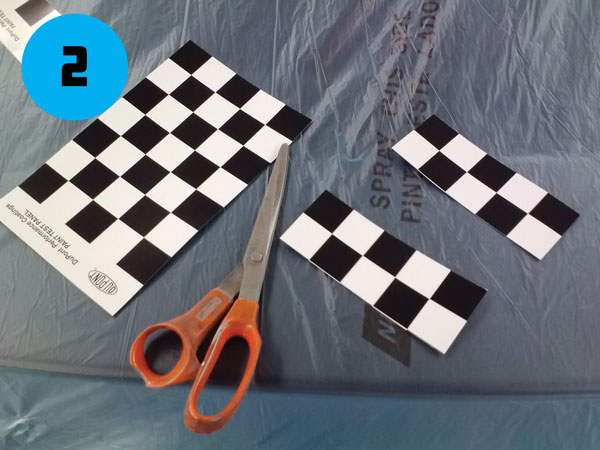 Cut spray card stock into strips about an inch wide.
Cut spray card stock into strips about an inch wide.
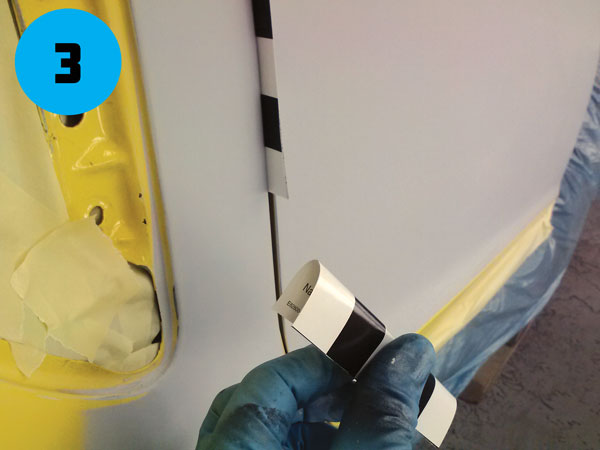 Gently bend the strips in half. Do not hard-crease the bend; you want the bend to be “springy.” Insert this into the door gap after degreasing and tacking immediately prior to applying sealer.
Gently bend the strips in half. Do not hard-crease the bend; you want the bend to be “springy.” Insert this into the door gap after degreasing and tacking immediately prior to applying sealer.
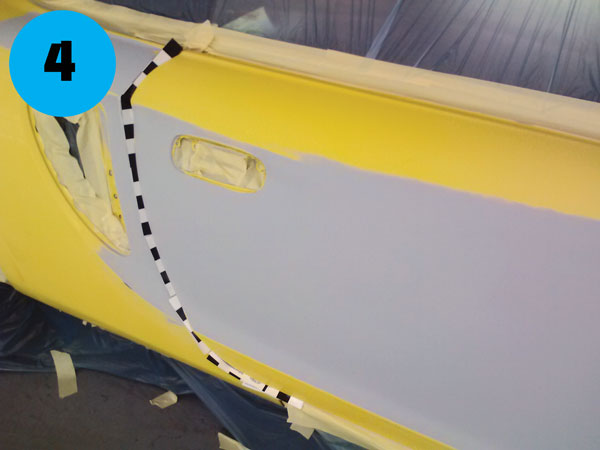 Car ready for sealer.
Car ready for sealer.
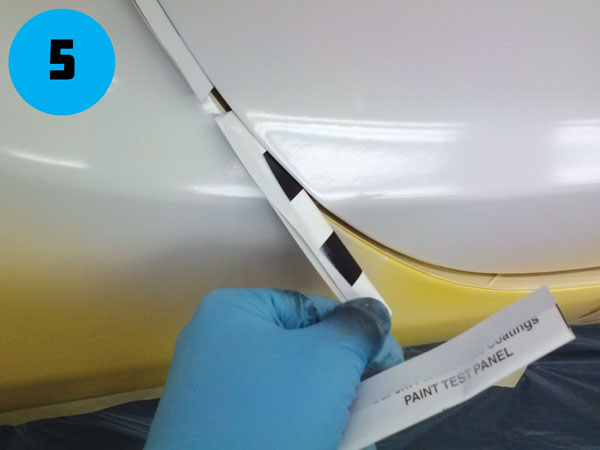 After sealer has flashed, remove cards and continue painting. Notice how the transition tape in the jamb near the rocker panel has been protected from the sealer.
After sealer has flashed, remove cards and continue painting. Notice how the transition tape in the jamb near the rocker panel has been protected from the sealer.
Article adapted from Body Shop Business.

